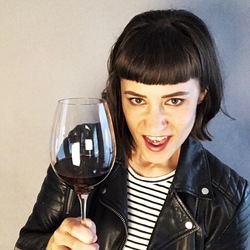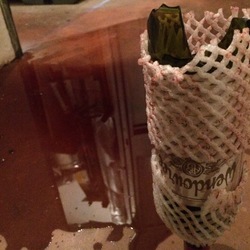10 Essential Facts on Sangiovese
Isole e Olena
Chianti Classico Sangiovese Blend 2014
Medium ruby; pronounced intensity aromas of red cherry, rose petals, earth; dry, high acid, high tannins, medium alcohol, medium body, pronounced intensity flavors of red cherry, red currant, toast, earth, mushroom — 8 years ago
Poliziano
Vino Nobile di Montepulciano Prugnolo Gentile Blend
Dark, earthy, musky herbs, and some smoky Brett. So savory. Chewier, less linear tannins than CC. I feel like there's some tasty Sangiovese fruit underneath all the earth and funk — 10 years ago
Carpineto
Riserva Vino Nobile di Montepulciano Sangiovese 2012
For $19 Euro, this 2007 was a great find while on holiday in San Gimignano. Had this with Italian Pizza. It was wonderful. Robust but one of the smoothest Nobile I've ever had. Going back to find another bottle! — 8 years ago
Fattoria di Fèlsina Berardenga
Riserva Rancia Chianti Classico Sangiovese Blend 2013
Deeply impressed today by the utterly classic 2013 Felsina Rancia - Earth-driven dark red fruits, dried flowers, leather and dusty spices greeted me on the nose, followed by an intense yet structured palate. There's so much depth here that's likely to take decades to unfurl. I can only image how much fun it's going to be to follow this wine. I'll be hiding a case in the cellar for the long haul. — 9 years ago
Azienda Agricola Fontodi
Vigna del Sorbo Gran Selezione Chianti Classico Sangiovese Blend 2013
Winery is located in the heart of Chianti Classico in the valley which lies south of the town of Panzano and is called the "Conca d’Oro" (the golden shell) because of its amphitheatre shape. Aromas of dried fruits and oak notes from 24 months of aging. On the palate sweet cherry flavors with tobacco and floral tones. Fine dusty tannins, well balanced, long finish ending with earthy mineral character. Pricy but one of the best I’ve tasted. — 8 years ago
Domaine d'E Croce (Yves Leccia)
Patrimonio Rouge Nieluccio Grenache 2013
Yum! Tasted like a cab franc/chinon to me. Little vegetal funk, light to medium bodied. Pairs well with an array of foods and also drinks nicely on its own. — 9 years ago










Stefan Dolhain
2012 vintage. The finest wine from Montalcino, deep, complex. very elegant and long. — 8 years ago